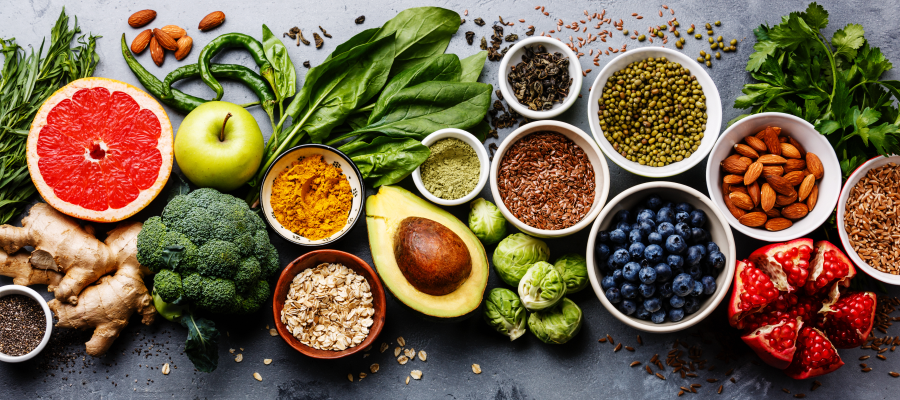
Consumer Insight: Ultra-Processed Food
A recent end-of-year report covering the period from July 2023 to March 2024 has highlighted that ultra-processed foods (UPFs) have become the second most significant concern for UK consumers, with 77% of respondents expressing worry about the issue. This level of concern is surpassed only by anxieties over food prices, which troubled 87% of respondents.
What is Ultra-Processed Food?
The term ‘ultra-processed foods’ (UPFs) originates from the NOVA food classification system, developed by researchers at the University of São Paulo, Brazil. This system categorises foods based on the extent of their processing during production, dividing them into four distinct groups:
- Unprocessed or Minimally Processed Foods: These include foods such as fruits, vegetables, milk, fish, pulses, eggs, nuts, and seeds. They are either unaltered or minimally altered from their natural state and contain no added ingredients.
- Processed Ingredients: These are substances added to other foods rather than consumed on their own, such as salt, sugar, and oils.
- Processed Foods: These foods are created by combining items from the first two categories and involve processing methods that can be replicated by home cooks. Examples include jam, pickles, tinned fruits and vegetables, homemade breads, and cheeses.
- Ultra-Processed Foods: UPFs typically contain multiple ingredients not commonly found in a home kitchen. They often include various additives and ingredients not used in typical home cooking, such as preservatives, emulsifiers, sweeteners, and artificial colours and flavours. These foods are characterised by their long shelf life and extensive ingredient lists, which frequently feature items unfamiliar to the average consumer.

Designing Healthier Menus for Restaurants and Eating Establishments
Incorporating healthier options into your restaurant menu can encourage patrons to choose nutritious dishes over highly processed foods. Here are some enhanced suggestions for designing a menu that prioritises fresh and wholesome ingredients suitable for a restaurant setting:
- Yogurt-Based Dishes: Create a Greek yogurt parfait with layers of fresh berries, house-made granola, and a drizzle of local honey. Offer a savoury yogurt option with cucumber, dill, and a touch of olive oil, served as a refreshing starter or side.
- House-Made Sauces and Dressings: Develop unique, signature sauces and dressings using fresh herbs, spices, and high-quality oils. For example, create a vibrant chimichurri for grilled meats, a tahini-based dressing for salads, or a roasted garlic aioli for sandwiches and wraps. These house-made condiments can enhance the flavour of your dishes while providing a healthier alternative to store-bought options.
- Innovative Breakfast Items: Enhance your breakfast menu with dishes like avocado toast topped with poached eggs, cherry tomatoes, and microgreens. Offer a breakfast bowl featuring quinoa, sautéed spinach, roasted sweet potatoes, and a soft-boiled egg, drizzled with a lemon-tahini dressing.
- Gourmet Desserts: Highlight desserts made with fresh ingredients, such as a fruit tart with a whole grain crust, filled with a light pastry cream and topped with seasonal fruits. Offer a poached pear with a spiced red wine reduction and a scoop of house-made cinnamon ice cream. These options provide a sophisticated and healthier alternative to traditional dessert offerings.
- Wholesome Snacks and Sides: Curate a selection of innovative snacks and sides, such as roasted chickpeas seasoned with smoked paprika, a vegetable platter with a trio of house-made dips (like hummus, baba ganoush, and tzatziki), or a mixed nut and seed brittle with a touch of sea salt. Serve a rustic cheese board featuring artisanal cheeses, fresh fruits, nuts, and whole grain crackers as a refined snack option.
By incorporating these creative and health-focused options, your menu can better support customers looking to make nutritious dietary choices while enjoying a high-quality dining experience. Offering a diverse range of fresh, made-to-order dishes can help ensure customers return time and time again, as consumer demands for healthier options continue to evolve. This approach not only caters to the current trend towards healthier eating but also builds customer loyalty, as patrons appreciate and seek out establishments that prioritise their well-being.
Conclusion
The steady concern about UPFs reflects a rising public awareness of the potential health impacts associated with these foods, which often contain high levels of sugar, salt, and unhealthy fats, as well as numerous additives. As a result, consumers are becoming more mindful of the need to make healthier food choices, even amidst ongoing economic pressures.
This report underscores the complexity of food-related issues facing UK consumers, who must navigate concerns about both the cost and quality of their food. With food prices and UPFs dominating consumer worries, it is clear that addressing both affordability and nutritional value remains crucial for ensuring public health and wellbeing.
Stay Connected
Stay connected and be the first to know about our latest products, special offers, and exciting news:The Cleaning Blog
Want to learn more about cleaning? From the latest cleaning and hygiene news to handy how-to guides, why not check out our most popular blog categories.Stay Connected
Stay connected and be the first to know about our latest products, special offers, and exciting news:











